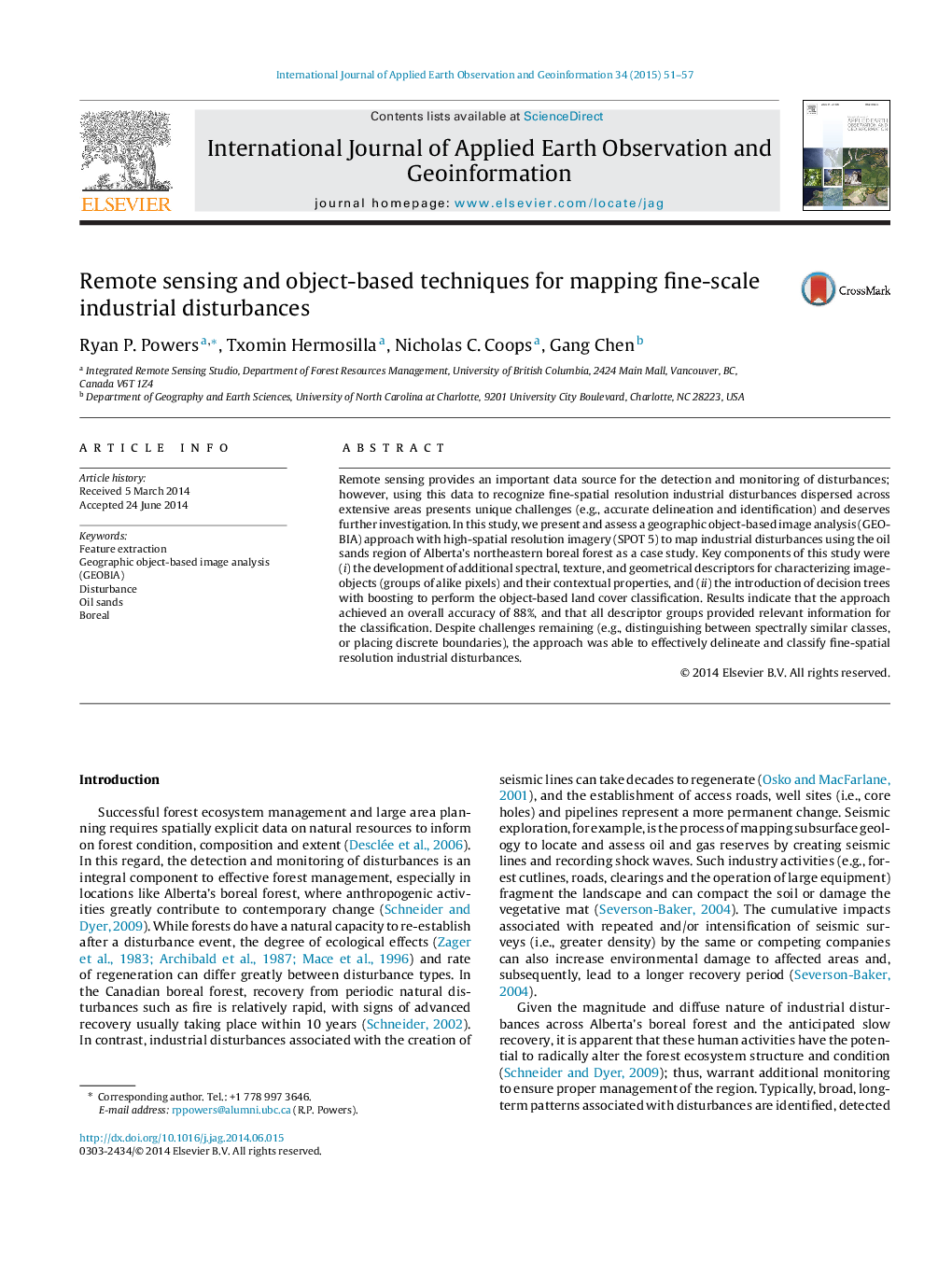| Article ID | Journal | Published Year | Pages | File Type |
|---|---|---|---|---|
| 6348722 | International Journal of Applied Earth Observation and Geoinformation | 2015 | 7 Pages |
Abstract
Remote sensing provides an important data source for the detection and monitoring of disturbances; however, using this data to recognize fine-spatial resolution industrial disturbances dispersed across extensive areas presents unique challenges (e.g., accurate delineation and identification) and deserves further investigation. In this study, we present and assess a geographic object-based image analysis (GEOBIA) approach with high-spatial resolution imagery (SPOT 5) to map industrial disturbances using the oil sands region of Alberta's northeastern boreal forest as a case study. Key components of this study were (i) the development of additional spectral, texture, and geometrical descriptors for characterizing image-objects (groups of alike pixels) and their contextual properties, and (ii) the introduction of decision trees with boosting to perform the object-based land cover classification. Results indicate that the approach achieved an overall accuracy of 88%, and that all descriptor groups provided relevant information for the classification. Despite challenges remaining (e.g., distinguishing between spectrally similar classes, or placing discrete boundaries), the approach was able to effectively delineate and classify fine-spatial resolution industrial disturbances.
Keywords
Related Topics
Physical Sciences and Engineering
Earth and Planetary Sciences
Computers in Earth Sciences
Authors
Ryan P. Powers, Txomin Hermosilla, Nicholas C. Coops, Gang Chen,
